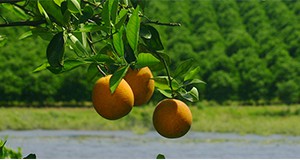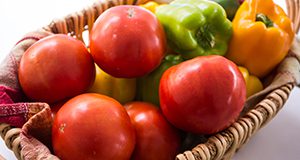Florida's K–12 schools provide a potential opportunity to increase market channel options for small- and mid-sized diversified farms, but processing, storage, and distribution resources are extremely limited for smaller producers. This 9-page document serves as a model and case study with steps for producers and other stakeholders to conduct a feasibility study before forming a cooperative to sell local fruits and vegetables to schools and other institutional food-service outlets. Written by Jonathan Adam Watson, Danielle D. Treadwell, Catherine Campbell, and Ray Bucklin, and published by the UF/IFAS Department of Agricultural and Biological Engineering, March 2021.
https://edis.ifas.ufl.edu/ae555
Tag: Southwest Florida
Cost of Production for Processed Oranges in Southwest Florida, 2016/17
This 5-page fact sheet written by Ariel Singerman and published by the UF/IFAS Food and Resource Economics Department summarizes the cost of production per acre for processed oranges grown in southwest Florida during the 2016/17 season. Typical users of the estimates include growers and consultants, who use them as a benchmark; property appraisers, who use them to compute the taxes for property owners; and researchers, who use the estimates to evaluate the economic feasibility of potential new technologies.
http://edis.ifas.ufl.edu/fe1038
Cost of Production for Processed Oranges Grown in Southwest Florida, 2015/16
This 4-page fact sheet written by Ariel Singerman and published by the Department of Food and Resource Economics presents the cost of production per acre for processed oranges in southwest Florida during 2015/16. Thirteen growers participated in the survey and provided annual, per-acre costs by program for a “typical” irrigated, mature grove (10+ years old), including resets. The number of acres managed by their combined operations accounts for approximately 41,000 acres, of an estimated 257,298 acres devoted to oranges in the area, so the sample represents 16% of the acreage devoted to oranges in that region. Typical users of the estimates in this publication include growers, consultants, property appraisers, and researchers.
http://edis.ifas.ufl.edu/fe1007
Cost of Production for Processed Oranges in Southwest Florida, 2014/15

UF/IFAS researchers collected data from twelve growers to estimate the cost of production per acre for processed oranges in southwest Florida during 2014/15. The cost estimates in this 4-page fact sheet written by Ariel Singerman and published by the Food and Resource Economics Department do not represent any individual operation. Instead, their purpose is to serve as a benchmark for the Florida citrus industry. Typical users of these estimates include growers, consultants, property appraisers, and researchers.
http://edis.ifas.ufl.edu/fe986
Growing Heirloom Tomato Varieties in Southwest Florida (HS921/HS174)
Heirloom tomatoes have seen a rebirth in popularity because of increasing demand for fresh, fully ripe, tasty tomatoes. A tomato must meet three criteria to be considered an heirloom variety: The variety must be reproduced by seed, must have been cultivated for more than 50 years, and must have a history. Heirloom tomatoes are known for their singular taste, shape, and color, which include purple, orange, and yellow, in addition to the common red tomatoes. This 9-page fact sheet was written by Monica Ozores-Hampton, Charles S. Vavrina, and Aline Coelho Frasca, and published by the UF Department of Horticultural Sciences, February 2012.
http://edis.ifas.ufl.edu/hs174
